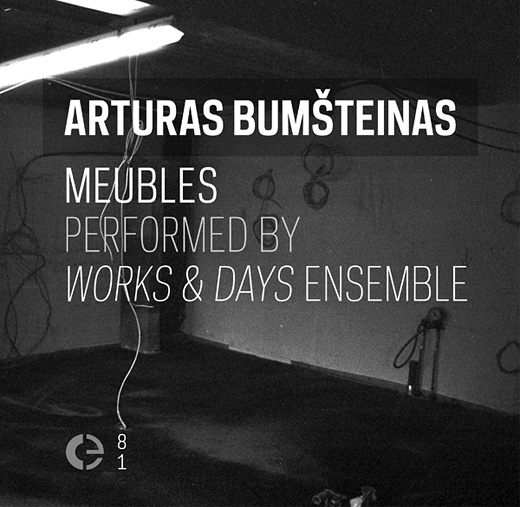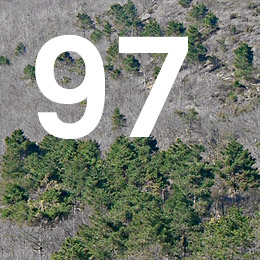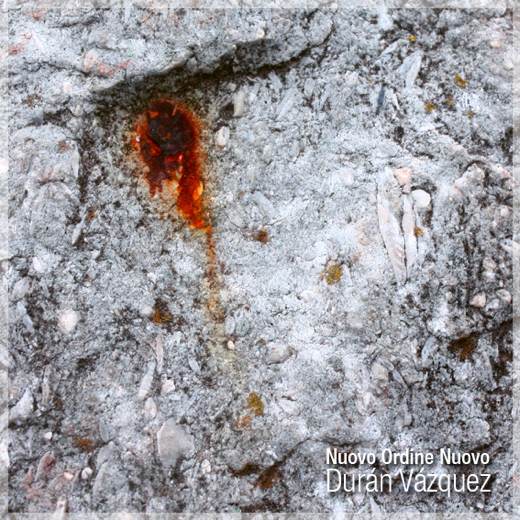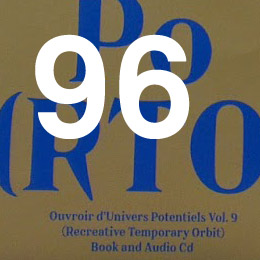
Futurónica 97

Episode 97 of Futurónica, a broadcast in Rádio Manobras (91.5 MHz in Porto, 18h30) and Rádio Zero (21h GMT, repeating on Tuesday at 01h) airs tomorrow, September 20th.
The playlist of Futurónica 98 is:
- Cem Güney, Water-Nature (2013, Water-Nature-City, Crónica)
- Cem Güney, A Phonetics Theme (2008, Praxis, Crónica)
- Cem Güney, City I (2013, Water-Nature-City, Crónica)
- Cem Güney, Undulations (Dedicated To Janek Schaefer) (2008, Praxis, Crónica)
- Cem Güney, Impulse (2008, Praxis, Crónica)
- Cem Güney, Bodrum (2010, Crónicast, Crónica)
You can follow Rádio Zero’s broadcasts at radiozero.pt/ouvir and Rádio Manobras at radiomanobras.pt.
Durán Vázquez releases “Nuovo Ordine Nuovo†at Tecnonucleo

Durán Vázquez’s new release on Tecnonucleo netlabel, Nuovo Ordine Nuovo, is now available through: http://archive.org/details/tn039
This work returns to the idea sketched in “50, 50 y 2” (Doministiku, 2010), with a recording for one loudspeaker, and hopefully with loud volume.
“50, 50 y 2” was an improvised live recording. The new work shows improvised digressions at the homestudio, mainly playing with effect parameters and with no overdubs.
“Five Years on Cold Asphalt†reviewed by The Sound Projector

It’s more than likely that the only time I’ve ever come across product from the Portuguese Crónica label was back in 2009 with a peculiar strand of sensual electronica, in the willowy form of Erotikon by The Beautiful Schizophonic, which delivered a reassuringly human touch, instead of the usual clanky, cold metallic feel of a poorly articulated claw hand. A great release for sure. So there were high hopes in spadeloads, when I received one of the more recent outpourings from the house of Crónica; namely Quarz‘s Five Years On Cold Asphalt, which effectively blurs the distinctions between live and studio and improv and scored audio. A collective of some seven years standing, that’s masterminded by Austrian composer Alexandr Vatagin (also with Tupolev and Post-Royal), who beachcombed diligently for other like-minded individuals and guest empaths along the analogue way. These include electronicists Nicolas Bernier (also of Radian), Stefan Nemeth (Lokai) and Alexander Schubert (Sinebag) to mention but three. Five Years… is a thirty-four minute exercise that actively resonates with methodically constructed studio strategies in pre and post production. The gist of which is that the recordings of player three are a reaction to the output of players one and two and so on. A kind of pyramidal recording concept I guess. This approach surprisingly, avoids an expected scattershot tableau and instead reveals a pleasing example of organic mid-period AMM’isms captured in a widescreen Mille Plateaux styled setting, replete with bowed cymbals, drawkcab tapery, amorphous field recordings and keening, gently screechy electronics. As a p.s., I could’ve easily stood for an extra twenty minutes or so…as the exuberant percussives of Bernhard Breuer come in and are ushered out in what seems to be double quick time. Now that’s no way to treat a guest (drummer)!
“Never so Alone†reviewed by Essmaa

Les matériaux sonores, base de cet album, ont été enregistrés à Lisbonne en Avril 2010 lors d’un séjour prolongé à Lisbonne suite au réveil du volcan Eyjafjallajökull en Islande.
Comme après la première grosse pluie de printemps.
La musique fait remonter du sol l’odeur des massifs, les résonances de l’asphalte, les bords boueux à l’embouchure du Tage, les carreaux sales des ruelles sombres, de l’errance solitaire dans un infime mouvement de la lumière en arrière-plan.. Une discrète odeur de suie froide, une odeur de poussière humide et prenante qui se cache les jours d’été. Comme si la douleur et la résignation, n’avait pas lieu d’être lors de la saison touristique. Et pourtant, en sortant des grands axes..
On retient alors un vol d’étourneaux dans le ciel d’une placette, le bruit du tramway fatigué.. et des sourires ridés invitant en rendre le temps moins lourd.
via Essmaa
“No End of Vinyl†reviewed by RNE3 Atmosfera

Catorce años después de la versión original de “the.end.of.vinyl”, la primera referencia exclusivamente digital de Pure, diez artistas se reúnen de nuevo a modo de evocación para reinterpretar las composiciones de Pure con sus propias reflexiones sobre las músicas digitales y su futuro. “The.end.of.vinyl” fue una de las primeras publicaciones de Mego, sello con sede en Viena que a final del milenio nos mostró lo que la música del futuro podrÃa ser. Hoy os presentamos “No End Of Vinyl” que comenzó a ser concebida como un conjunto de discos que podrÃan publicarse en vinilo a partir de composiciones digitales. En algún lugar a lo largo del proceso, la disonancia entre la naturaleza de las piezas y el formato comenzó a manifestarse y se tomó la decisión de volver a la forma “antigua” del disco compacto. Un disco muy intenso que merece un amplio recorrido, paseo que hoy iniciamos con dos de sus propuestas. Hemos comenzados con la de JSX o lo que es lo mismo Jorge Sánchez- Chiong y el tema Biological Agents of Vinyl Degradation y el segundo tema que os proponemos de este recopilatorio del sello Crónica es el de Goner, compuesto por Martin Maischein.
“No End of Vinyl†reviewed by Headphone Commute

13 years ago, Mego label released Pure’s the.end.of.vinyl on a 3†CD. The release marked a shift in Pure’s sound from more dancefloor-oriented productions toward something more abstract and experimental. Ironically, the release was pressed on CD because it was the prevalent format at the time; the name describes the techniques used to create the music (working with vinyl run-out grooves as the primary source material). Now the CD format has waned to such an extent that it appears to be on its way out, while vinyl has continued to flourish as a format for avid music listeners.
No End of Vinyl organizes several formidable artists to revisit, rework, remix, and reinterpret Pure’s original recordings into new tracks. The approach varies from sculpted noisescapes to more beat-driven excursions, a range that is not only broad but also quite nice in terms of listening dynamic. To fully appreciate the process of the album, I recommend downloading the original the.end.of.vinyl, which is available as a free download from Crónica. It’s quite good on its own, but it’s also interesting to hear the source material that inspired this new collection.
Several artists opt to remain in the same highly abstract arena in which the source material existed, including the swirling, manipulated “Zeiundneunzig (für Pure)†by @c or the post-industrial, shimmering haze of “Miyamizu†contributed by Cindytalk. Elsewhere, a handful of contributors steer the material more in the direction of beats and hooks. Christoph De Babalon, someone from whom I haven’t heard new music in years, contributes my personal favorite, with a shimmering, hazy refrain and sputtering drum patterns. As a point of contrast, a close second favorite of mine is Pita’s surprisingly meditative “This & That Edit,†buzzing with beatless tension but oddly serene considering his tendency for noisier material. JSX and Goner each use Pure’s source material as a starting point for fairly dense, more industrial and rhythmically musical workouts, while Rashad Becker stands apart in manipulating the source material into the weirdo chorus of synthetic organism voices that characterize his recent solo album.
“the.end.of.vinyl†was one of the early releases on Mego, the Vienna-based label that in the end of the millennium showed us what the music of the future could be. In 1999 its title resonated with post-analog angst, recalling the transformation (maybe even the demise) of the music market and of the cultures that it had helped to breed. It announced and perhaps confirmed an end that is still latent.â€
It’s a decidedly mixed bag of material, but the scope of styles and sounds within maintain a healthy balance between worlds of abstraction and accessibility. Fans of the original Pure work will no doubt find at least a few tracks that fall in line (different enough to be interesting but similar enough to feel of the same world) with several others that might broaden their horizons. The compilation is released on Crónica, a Portugal based label and is available on CD as well as digital download.
“No End of Vinyl†reviewed by Chain D.L.K.

Fourteen years after Vienna-based Mego released “The End of Vinyl” by Austrian dynamic producer Peter Votava aka Pure on 3″ cd, someone could think that its sibylline prediction could be better spot-on if it were called “the.agony.of.vinyl”, so that Cronica folks decided to fishes it out from the ocean of sonic memories by involving a number of talented noise and sound blacksmith for a number of reinterpretations and giving new shapes to all that molten black plastic, which lives again in this awesome collection they wisely retitled “No End Of Vinyl”. All those menacing predictions by music market presumed gurus about the extinction of vinyl hasn’t come true yet, even if its renaissance could be the last convulsion. Anyway, Cronica’s heads, Miguel Carvalhais and Pedro Tudela, who introduced this selection in the guise of @c by means of abrasive liquid clots and ganglions on “Zweiundneunzig”, decided to print it on cd, the format whose lifetime is going to expire before the vinyl one. The following sound artists explore a very wide stylistical range in a masterly manner, whose sense of subtle decay and a certain feeling of constant digging for a supposed sepulture got tempered with remarkable specimen of electronic refinement: the aural dark-ambient shades by Cindytalk’s “Miyamizu”, the mesmeric and somehow cinematic remixes of “The End Of Vinyl”, where both Christoph De Babalon and Goner scans agony by impressive electronic textures and airy pad synths, which could resemble Beefcake’s or Gridlock’s epic hooks, the spellbinding buzzing whistles by Mego label owner Peter Rehberg aka Pita on “This & That Edit”, the absorbing subtonal thuping and thunderous shocks on “Biological Agents Of Vinyl Degradation” by Jorge-Sanchez-Chiong (JSX), the gradual gurgling combustion by Rashad Becker on “Take Me To Your Lead Out”, the illusory frugality of “Opera Povera” by Lithuanian sound artist Arturas Bumsteinas, the terminally ill dark ambient of “‘end’end'” by Opcion and the final strokes of solemn atonement and the industrial drops on “Never Ending Vinyl” by Current 909 and Pure… a collection of adhesive stuff, whose rotting features seem to understydu for a new body. Vito Camarretta
via Chain D.L.K.
Futurónica 96

Episode 96 of Futurónica, a broadcast in Rádio Manobras (91.5 MHz in Porto, 18h30) and Rádio Zero (21h GMT, repeating on Tuesday at 01h) airs tomorrow, September 6th.
The playlist of Futurónica 96 is:
- André Cepeda & Eduardo Matos, Field Recording for Canal Project (2013, OuUnPo(RTO), OuUnPo & Dent-de-Leone)
- Alejandra & Aeron, Joaquim Nogueira e Filho, Fabricante De Concertinas (2005, Porto (Folklore Fragments Volume Two), Lucky Kitchen)
- Gustavo Costa, Fontinha e outras histórias populares (2013, OuUnPo(RTO), OuUnPo & Dent-de-Leone)
- Alejandra & Aeron, Boat Horns Afurada (2005, Porto (Folklore Fragments Volume Two), Lucky Kitchen)
- Alejandra & Aeron, Broa De Avintes From Padaria Neto (2005, Porto (Folklore Fragments Volume Two), Lucky Kitchen)
- @c, Quatre-vingt-seize (pour OuUnPo) (2013, OuUnPo(RTO), OuUnPo & Dent-de-Leone)
- Alejandra & Aeron, Barbearia Salão Ferreira (2005, Porto (Folklore Fragments Volume Two), Lucky Kitchen)
- Alejandra & Aeron, Fishing in Foz (2005, Porto (Folklore Fragments Volume Two), Lucky Kitchen)
- Srosh Ensemble, Palychloroprene (2013, OuUnPo(RTO), OuUnPo & Dent-de-Leone)
- Alejandra & Aeron, Wine Testing At The Caves Ferreira (2005, Porto (Folklore Fragments Volume Two), Lucky Kitchen)
- Farištamo Susi and Marita Lumi, Saia do Harpa (2013, OuUnPo(RTO), OuUnPo & Dent-de-Leone)
- Alejandra & Aeron, Amolador De Facas, Mercado Do Bolhão (2005, Porto (Folklore Fragments Volume Two), Lucky Kitchen)
- Alejandra & Aeron, Domingos Martins Machado Cavaquinho Maker (2005, Porto (Folklore Fragments Volume Two), Lucky Kitchen)
- Srosh Ensemble, Simul (2013, OuUnPo(RTO), OuUnPo & Dent-de-Leone)
- Alejandra & Aeron, Filling An Oak Barrel, Caves Sandeman (2005, Porto (Folklore Fragments Volume Two), Lucky Kitchen)
- The OuUnPonians, Funeral Music (2013, OuUnPo(RTO), OuUnPo & Dent-de-Leone)
You can follow Rádio Zero’s broadcasts at radiozero.pt/ouvir and Rádio Manobras at radiomanobras.pt.
“No End of Vinyl†reviewed by Rockerilla

The End Of Vinyl fu il primo disco in cui Peter Votava aka Pure abbandonava il mondo della techno da club per cercare di condurre la sua musica verso nuovi orizzonti. Per omaggiare la sua opera, l’etichetta portoghese Crónica chiama un cast di propri scudieri e grandi nomi a rimettere mano ad una selezione di materiali dell’artista viennese in questo No End Of Vinyl, titolo che vuol quasi rispondere alla denuncia dell’originale che data ormai quattordici anni. Fra gli altri si distinguono Cindytalk che trascina Myamizu nel suo mondo di fruscii e cascate di rumore, Pita che sommerge This & That in un minimalismo analogico e l’auto-remix ritmico di Votava a nome Current 909 su Never Ending Vinyl. INCHINO.
Matteo Meda
